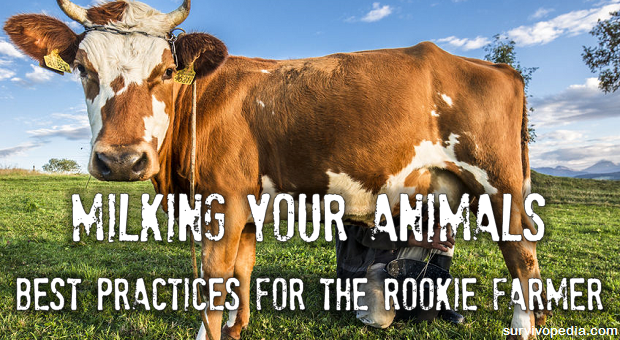So now you have cows and maybe some goats. All you need to do is go out and ask them nicely to fill your pail with milk, right? We wish it were that easy! There are some things that you need to know about milking before you just go out and grab a stool.
We have some tips for beginner farmers about how to milk your animals.
How to Keep From Getting Kicked by Your Milk Cow
You’ve likely seen horses or mules kick. They kick out behind them but cows don’t; they kick forward. This is especially troublesome when you’re sitting right where they can land a hoof. Even if they miss you, there’s a good chance they’ll get the milk bucket.
We have a few tips for you though.
- First, create a calm environment. Don’t act nervous or raise your voice because you’ll stress the cow. Not only does this increase the likelihood of kicking, it also inhibits them from letting the milk down. I know some farmers that play classical music at low volume or hum while they’re milking!
- Use a kick bar. You can buy these at any farm supply store and they’re easy to use. You just hook it in front of the cow’s rear leg and over its back. There’s a nerve there that slightly immobilizes the cow. It won’t entirely stop kicking in all cows but it does slow them down and limit range of motion.
- Mix it up. It could just be that your cow doesn’t like the way that you milk her. If your hands are cold or you are milking from her non-preferred side (yes, some cows have them!), switch sides.
- It’s a good practice to have a second bucket to pour your milk into periodically. That way, if the cow kicks the bucket (literally, not proverbially) you won’t lose all of your milk.
Cleanliness




